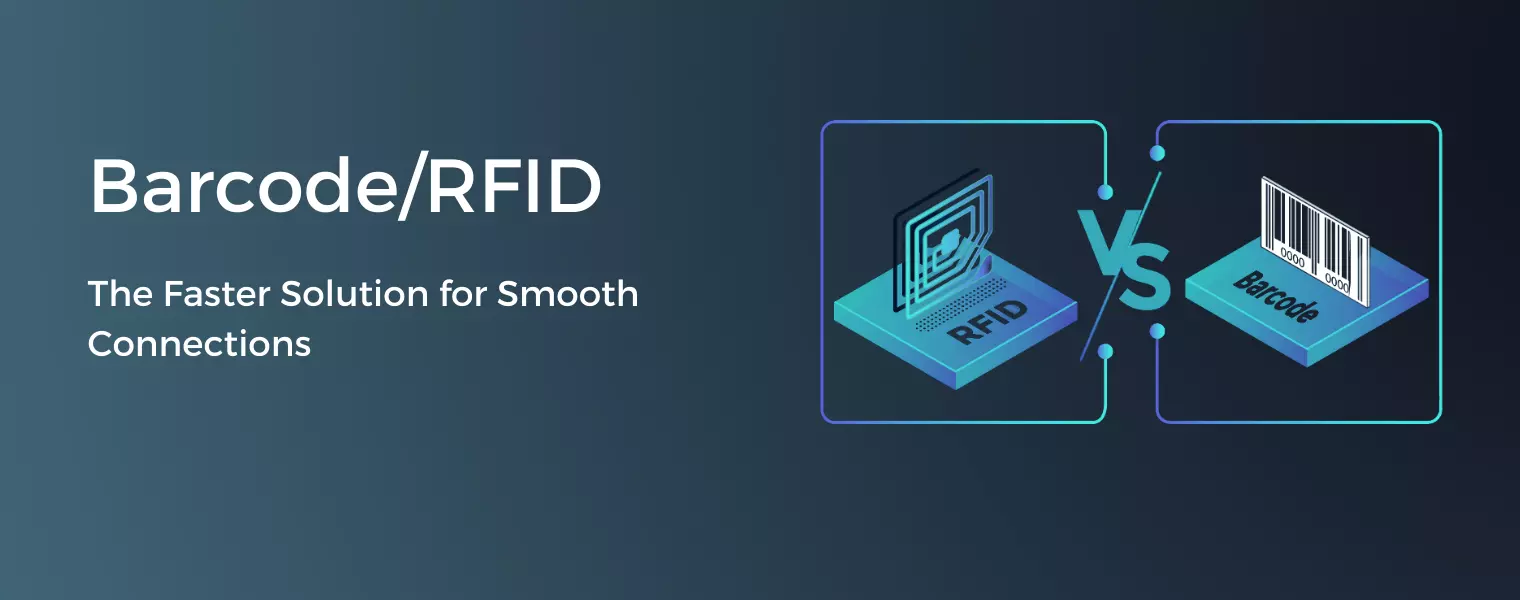
The advancement of technology in supply chains has only made them smarter by the day. Every day, supply chains around the world must ensure that their processes are free of issues such as material flow disruption, quality, data visibility, and integrity, to name a few. RFID, as a technology, is capable of dealing with such disruptions and much more.
RFID (Radio-frequency identification) has continued to make significant performance shifts across supply chains of various industries since its first commercial use as a security tag in 1966. RFID is a more advanced version of barcodes that produces faster and more efficient results. RFID tags, unlike barcodes, can be read from anywhere in their electromagnetic field range and can read multiple tags at the same time. This not only promotes higher read rates but also significantly reduces human intervention, making them error-free.
Businesses typically use one of two types of RFID tags: Active RFID tags and Passive RFID tags. Active RFID tags require a power source and are more expensive to implement. Passive RFID tags, on the other hand, are powered by external RFID tag readers. Passive RFID tags are thus read when a product is sold, when it leaves or enters a store, or when it passes through other connected "read points." In a properly controlled environment, such as a store, passive RFID can increase visibility without the high costs of an active RFID tag.
RFID is a highly adaptable technology with applications ranging from controlling manufacturing processes to equipment maintenance and inspection, asset management, and tracking goods through distribution. RFID systems benefit businesses of all sizes by allowing them to quickly improve efficiency and cut costs by automating processes and improving asset utilisation and quality. RFID is at the heart of the Internet of Things and can serve as the foundation of an effective asset management system.
Most organisations struggle to keep track of assets and materials, whether it's components on a production line, finished products being shipped, industrial containers that need to be returned, or tools, laptops, and other high-value equipment that frequently go missing. RFID systems provide a quick and dependable method of tracking them without having to count each individual item. RFID applications allow you to instantly see how many items of each type you have, as well as their location or stage in the process. Items can be tracked from the time they are received in stores to the time they are issued to manufacturing and used in a finished item. This makes inventory management, stock checks and audits, and shrinkage control simple. RFID can also assist in the recovery of items that are on-site but have been misplaced.
RFID applications can track the movement of goods and upload the data to an ERP or financial management system. As a result, they can eliminate the need for manual form filling and obsolete spreadsheets. Fixed readers at key points can save even more time – and on a production line, for example, can completely eliminate the need for manual intervention.
RFID eliminates transcription errors, data duplication, and "missed items" when used to collect data on a large number of items at the same time because data is collected and uploaded electronically. The use of cloud-based systems allows everyone in the organisation to see up-to-date information on the location or status of items. Customers can also be given access to data.
RFID enables real-time data capture at various stages of an asset's or product's lifecycle, providing enhanced management information for planning and operational purposes. These insights can be used by businesses to drive further efficiency improvements.
Organizations that use RFID to improve inventory management can provide a service that differentiates them from the competition and promotes increased customer satisfaction, as well as opportunities for higher sales and better margins.
Accurate information tracking
Businesses can track product location using information stored in RFID tags.
Increase productivity
Barcode labels and RFID tags are easy to scan at the time of packaging and shipping to enhance productivity.
Enhanced customer satisfaction
Information captured through barcodes and RFID is beneficial
for tracking products and updating customers about their shipment status.
Barcode and RFID scan reduces manual tasks by automatically storing product information. It also saves labour costs and increases productivity by eliminating paperwork.
Barcode and RFID scanning automate the data entry process and reduces the scope of human errors. Digitally stored data thus enables businesses to effectively manage their orders, inventory, and shipments.
Barcodes and RFIDs enhance inventory visibility by providing insights into the materials coming in and out. Attaching RFID tag or barcode label enables manufacturing companies to track mobile and fixed assets in real-time.
Barcode and RFID can be integrated with database software to locate assets in real-time. It also tracks inventory from acquisition to disposal and reduces audit time.
Welcome to DoFort !